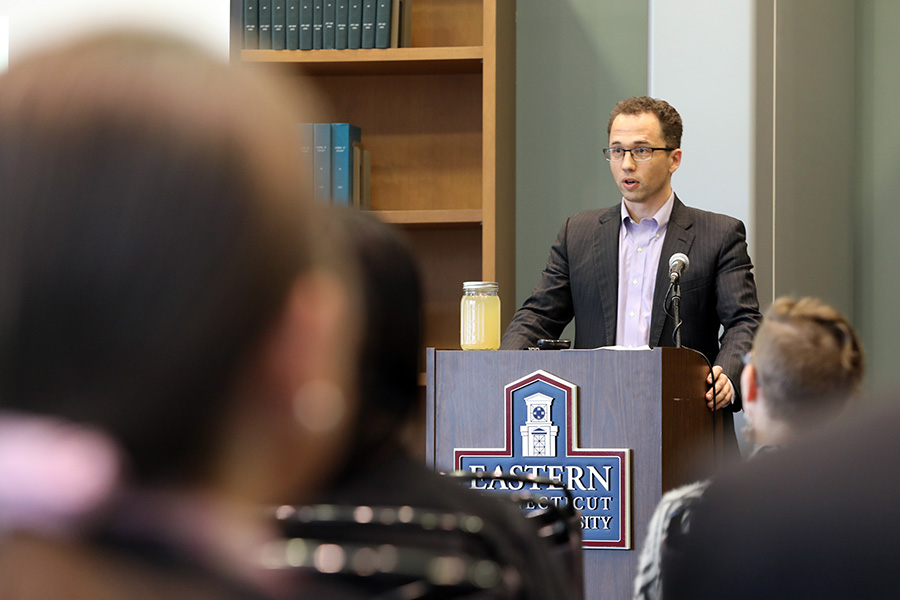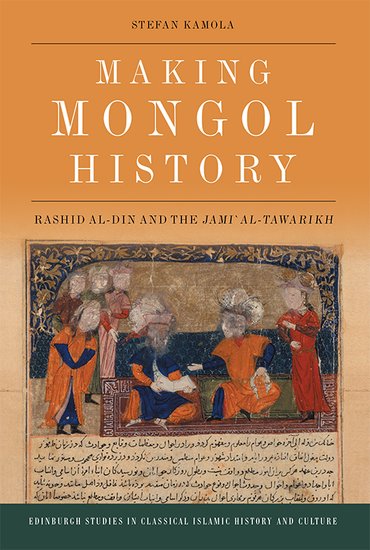


Published on November 01, 2019

 Eastern Connecticut State University History Professor Stefan Kamola gave a talk on his recent book “Making Mongol History: Rashid al-Din and the Jami’ al-Tawarikh” on Oct. 25, shedding light on a dynamic period in Iranian and Islamic history.
Eastern Connecticut State University History Professor Stefan Kamola gave a talk on his recent book “Making Mongol History: Rashid al-Din and the Jami’ al-Tawarikh” on Oct. 25, shedding light on a dynamic period in Iranian and Islamic history.
“Making Mongol History” explores the life and work of Rashid al-Din Tabib, the most dominant statesman working for Mongol rulers 700 years ago. Kamola began with a brief overview of Mongol history, beginning with the time of Genghis Khan, whose conquests spread across China, the Middle East and the city states of Russia. Genghis Khan was the founder of the Mongol Empire.
“The process of studying and writing about the past is too often presented or assigned as a predictable process,” Kamola said of the project. “In fact, writing history is recursive. The act of digging through sources changes our understanding of what questions should be asked.”
During the talk, Kamola used photographic slides to showcase pivotal events from the past 700 years, ranging from modern Persian and European structures of the Mongol world to influential figures in medieval Islamic history.
Research for “Making Mongol History” began eight years ago when Kamola traveled across Europe to conduct archival research. The book was published this past August by the Edinburgh University Press.
Kamola spoke about manuscripts of Rashid al-Din that he has yet to examine, and which are chiefly located in India and Iran. “These great big deluxe manuscripts get all the attention, but the informal and less fancy ones that aren’t illustrated or complete are where you might find the original version of the dynastic history… they could still be out there.”
Kamola received his undergraduate degree at Oberlin College in Ohio and earned his master’s degree and Ph.D. at the University of Washington. From 2013-16 he did a post-doctoral fellowship at Princeton University’s Society of Fellows and began teaching at Eastern in 2016.
Written by Bobbi Brown